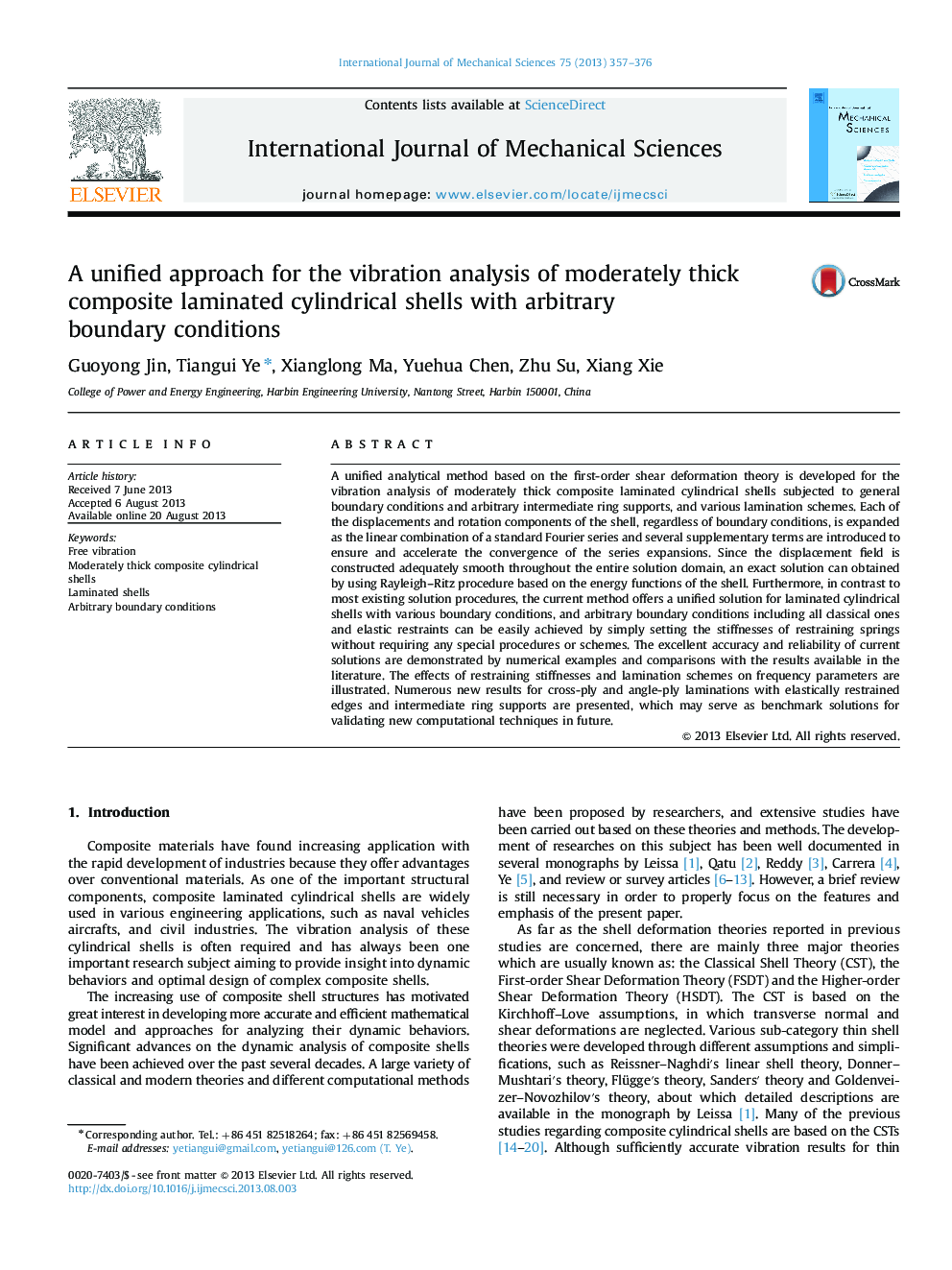| Article ID | Journal | Published Year | Pages | File Type |
|---|---|---|---|---|
| 783726 | International Journal of Mechanical Sciences | 2013 | 20 Pages |
•A unified vibration analysis method is developed for thick laminated cylindrical shells.•The proposed method is appropriate for arbitrary boundary conditions.•New results for laminated cylindrical shells with elastic restraints.•New results for intermediate ring supported laminated cylindrical shells.•Influence of the locations of a ring support is investigated.
A unified analytical method based on the first-order shear deformation theory is developed for the vibration analysis of moderately thick composite laminated cylindrical shells subjected to general boundary conditions and arbitrary intermediate ring supports, and various lamination schemes. Each of the displacements and rotation components of the shell, regardless of boundary conditions, is expanded as the linear combination of a standard Fourier series and several supplementary terms are introduced to ensure and accelerate the convergence of the series expansions. Since the displacement field is constructed adequately smooth throughout the entire solution domain, an exact solution can obtained by using Rayleigh–Ritz procedure based on the energy functions of the shell. Furthermore, in contrast to most existing solution procedures, the current method offers a unified solution for laminated cylindrical shells with various boundary conditions, and arbitrary boundary conditions including all classical ones and elastic restraints can be easily achieved by simply setting the stiffnesses of restraining springs without requiring any special procedures or schemes. The excellent accuracy and reliability of current solutions are demonstrated by numerical examples and comparisons with the results available in the literature. The effects of restraining stiffnesses and lamination schemes on frequency parameters are illustrated. Numerous new results for cross-ply and angle-ply laminations with elastically restrained edges and intermediate ring supports are presented, which may serve as benchmark solutions for validating new computational techniques in future.
